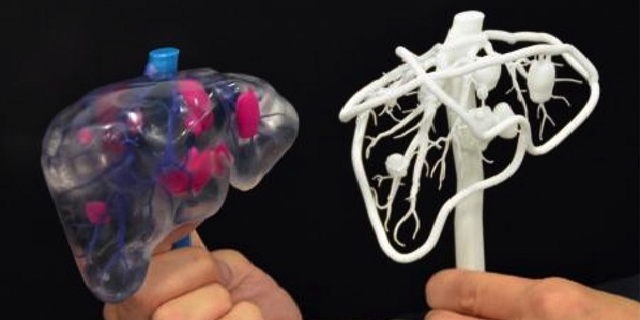 What amazes me the most about 3D printing is just how rapidly the technology is being adopted and how advanced the printing process has become over the last two to three years. There are few industries, if any, which have realized the benefit of 3D printing as much as the medical industry. Every week we stumble upon new, innovative ways in which 3D printing can be used to either help save the life of an individual, or at least make it more fulfilling.
What amazes me the most about 3D printing is just how rapidly the technology is being adopted and how advanced the printing process has become over the last two to three years. There are few industries, if any, which have realized the benefit of 3D printing as much as the medical industry. Every week we stumble upon new, innovative ways in which 3D printing can be used to either help save the life of an individual, or at least make it more fulfilling.
One application which has seen exponential adoption within hospitals and surgical centers around the world, is that of 3D printed medical models. By using CT scan and MRI data researchers and doctors are able to fabricate near-replicas of a patient’s internal organ structure, allowing them to practice complicated procedures on a ‘dummy’ organ prior to moving on to the actual surgery. Additionally, these models allow surgeons to better understand just what a particular surgery will require from them, much better than a 3D image on a computer monitor can.
Recently, researchers at the University of Tsukuba, one of Japan’s oldest national universities, located in Tsukuba, Ibaraki Prefecture, and Dai Nippon Printing Company have developed a method of printing patient specific 3D models of the human liver. As we’ve mentioned above, we’ve all seen 3D printed medical models of organs before, but these models are much more than just that. Using multiple materials within the printing process, including a clear polymer to mimic the main organ’s tissue, and red and blue polymer to represent the arteries and the veins within the organ, researchers have been able to produce an incredibly accurate model.
Price is certainly an aspect of these models researchers are looking to reduce, so they’ve recently turned to exploring ways in which they can cut the production costs of such models significantly. To do this, they’ve cut back on the total amount of polymer required and created an open-air 3D print of the same liver. As you can see in the image above, the new liver model uses only one type of resin, but is able to convey the same information as the more complicated multi-resin liver. They have thus been able to reduce the total cost of creating such models by 66% to approximately 300,000 to 400,000 yen ($2500 – $3300).
“We have tested these products with patients and the results are incredible,” explained a University of Tsukuba researcher. “Its easy to understand I think why this technology is such an attractive medical service, but also beneficial to the training of young doctors.”
While they have not used these new models for any specific surgery quite yet, they have used them extensively while training soon-to-be doctors. The university looks to bring the new liver models into the surgical arena sometime next year and is already working on other organs such as the pancreas.
Certainly these models could significantly reduce the overhead that any hospital or surgical center has to deal with. A reduction in price from around $10,000 to under $3300 would ultimately be passed on to the patient, which none can argue is a bad thing.
Let us know your thoughts on these affordable medical models coming out of Japan. Discuss in the 3D Printed Medical Model forum thread on 3DPB.com.
Subscribe to Our Email Newsletter
Stay up-to-date on all the latest news from the 3D printing industry and receive information and offers from third party vendors.
You May Also Like
Gorilla Sports GE’s First 3D Printed Titanium Cast
How do you help a gorilla with a broken arm? Sounds like the start of a bad joke a zookeeper might tell, but it’s an actual dilemma recently faced by...
Nylon 3D Printed Parts Made More Functional with Coatings & Colors
Parts 3D printed from polyamide (PA, Nylon) 12 using powder bed fusion (PBF) are a mainstay in the additive manufacturing (AM) industry. While post-finishing processes have improved the porosity of...
$25M to Back Sintavia’s Largest Expansion of Metal 3D Printing Capacity Since 2019
Sintavia, the digital manufacturing company specializing in mission-critical parts for strategic sectors, announced a $25 million investment to increase its production capacity, the largest expansion to its operations since 2019....
Velo3D Initiates Public Offering in a Bid to Strengthen Financial Foundations and Drive Future Growth
Velo3D (NYSE: VLD) has been among a number of publicly traded 3D printing firms that have attempted to weather the current macroeconomic climate. After posting a challenging financial report for 2023,...
































